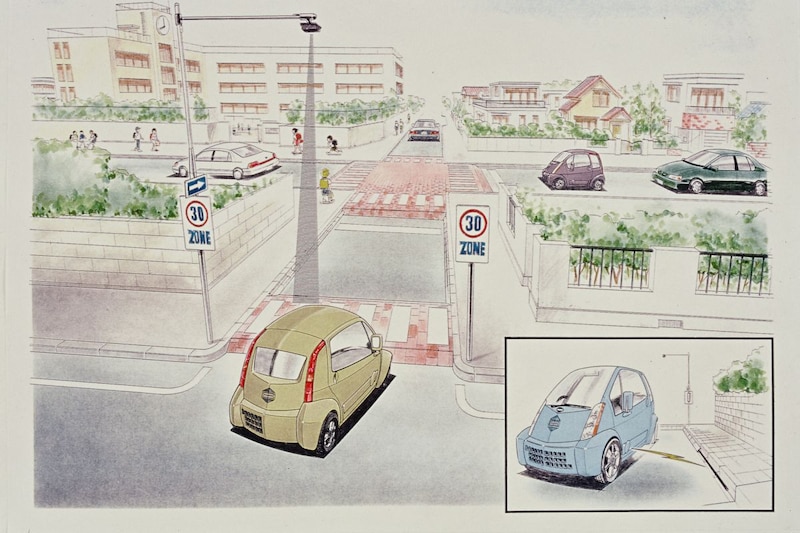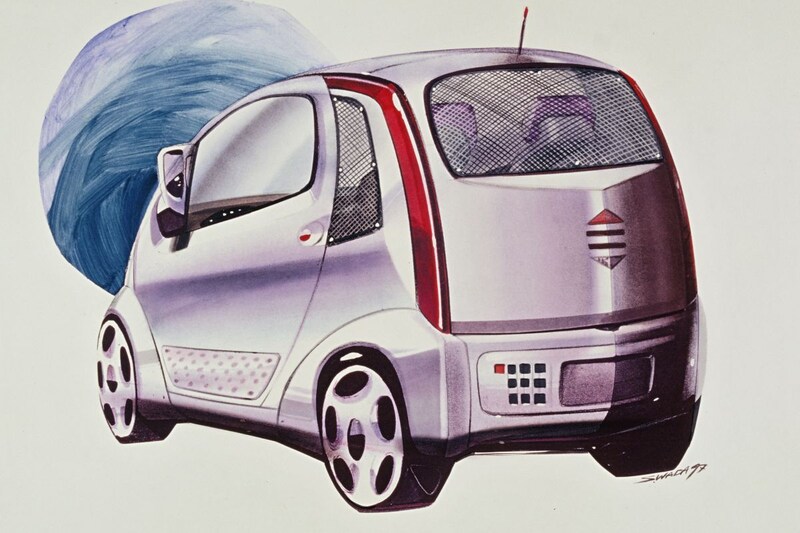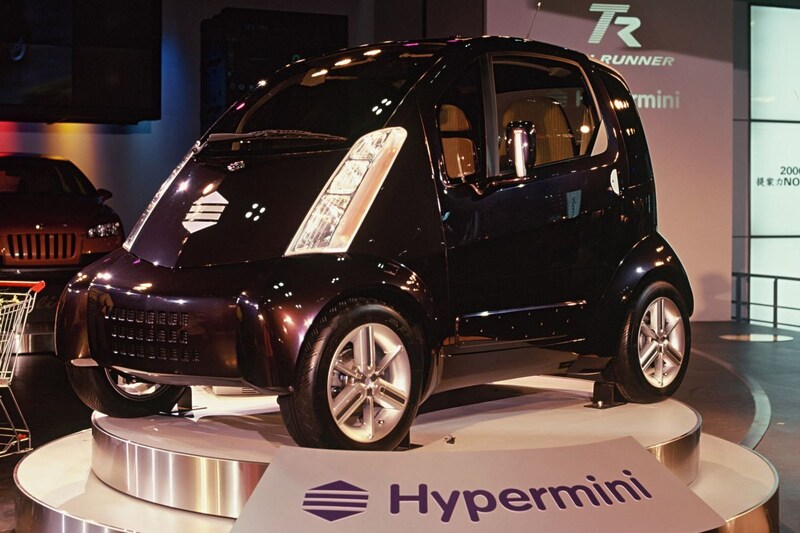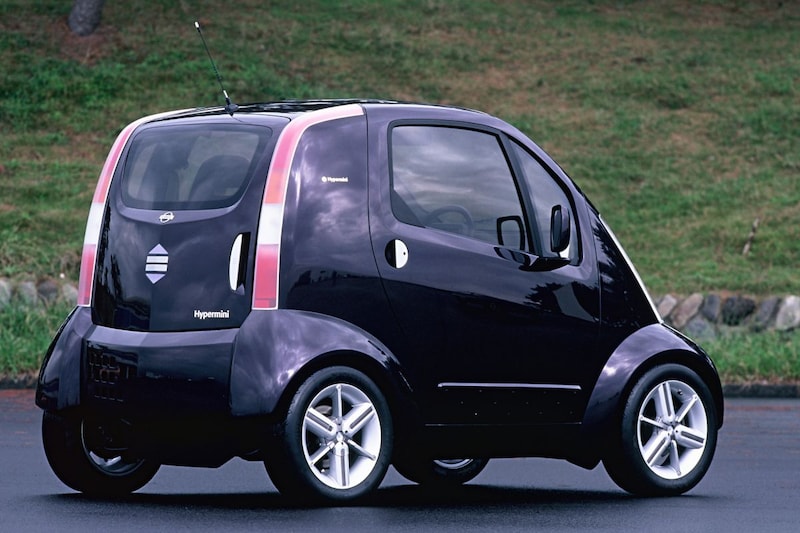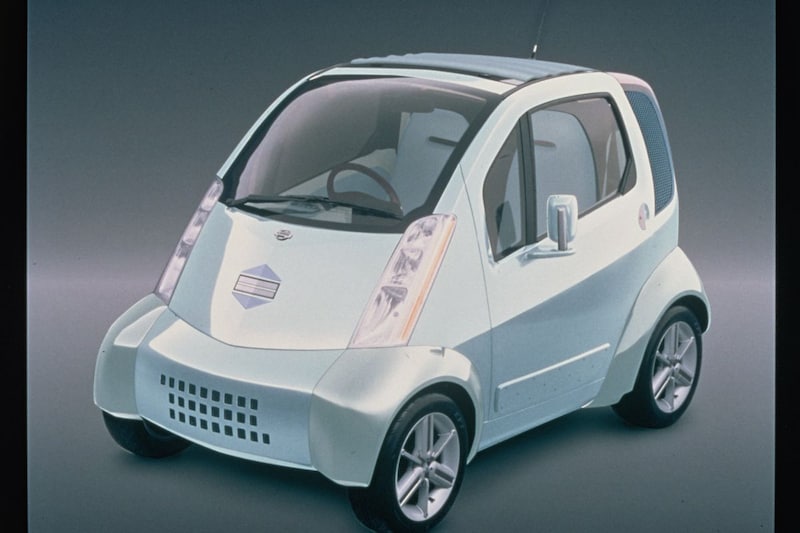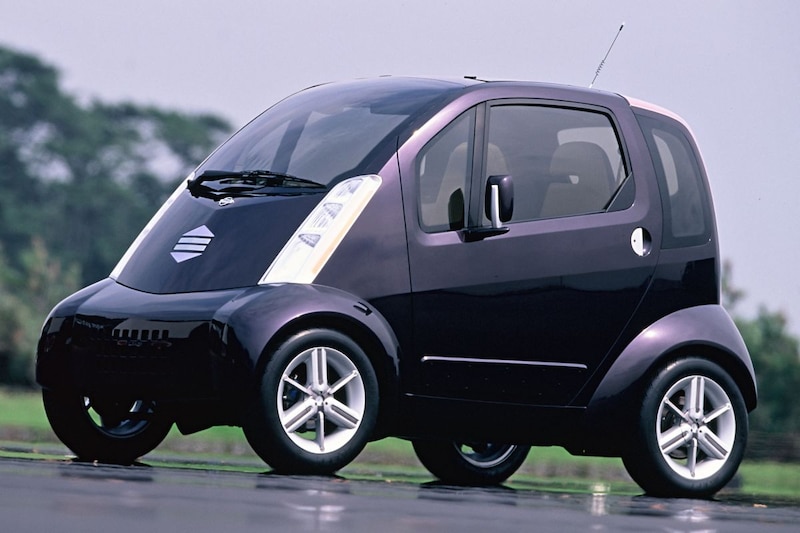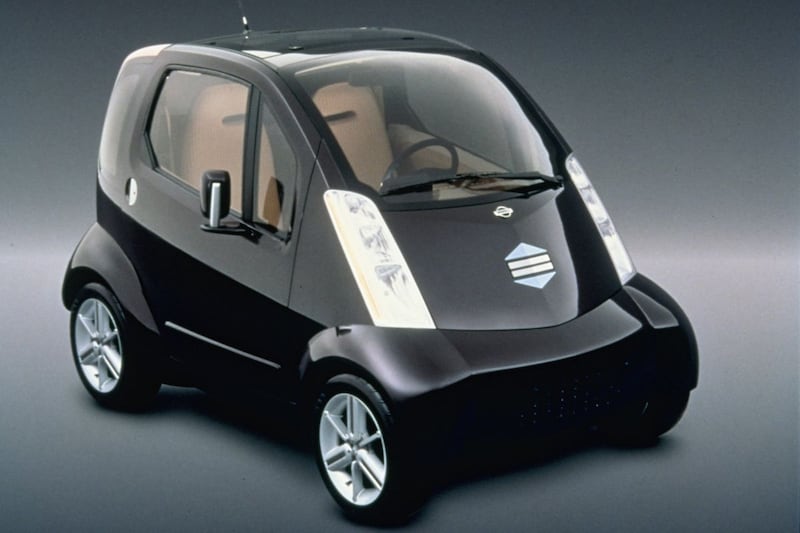Innovative electric city car
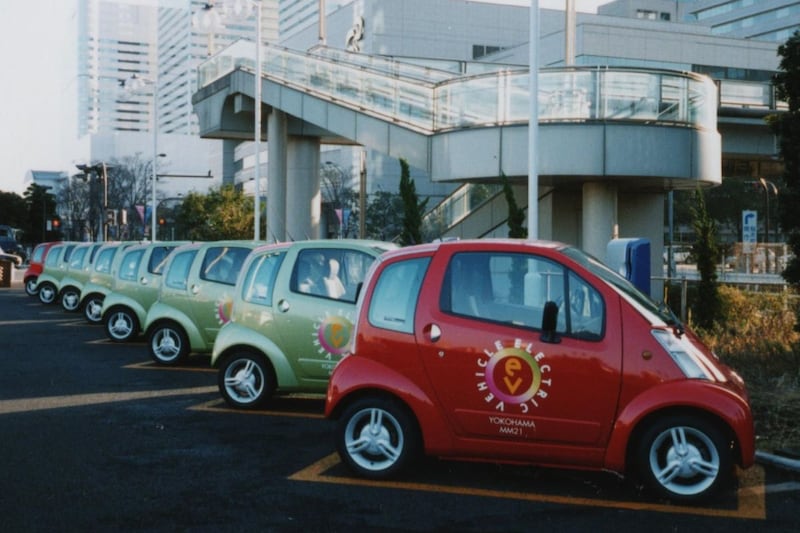

With the Leaf, Nissan was one of the first car manufacturers when it comes to piloting an electric car to the production stage. However, the Leaf was not the first attempt by the Japanese to put an EV into production. Meet the Hypermini, an electric two-seater that was sold in limited numbers around the turn of the millennium.
No, the Hypermini was not the first electric Nissan. That was the Tama from 1947. Nissan developed it because there was a fuel shortage in Japan after the Second World War. However, Nissan soon pulled the plug on that project, mainly because the fuel supply was sufficient in the following years and the need for an electric car disappeared. After that, Nissan kept quiet about EVs for a long time, until the brand presented the Prairie Joy EV in 1997. That was the first EV with a lithium-ion battery. That Prairie Joy EV was ultimately a major harbinger for the Hypermini, a dedicated EV with lithium-ion battery.

Nissan Hypermini
Nissan presented the Hypermini as a concept at the 1997 Tokyo Motor Show. The concept car turned out to be a good precursor for the Hypermini that Nissan eventually went into production in 2000. The final Hypermini had smaller headlights and a higher front bumper, but otherwise remained true to the silhouette of the concept car. Nissan had come up with a new logo for the Hypermini – two horizontal stripes with a triangle at the top and bottom – but came back to it: the final Hypermini simply had Nissan decals front and rear.
Lithium-ion and lightweight
The goal of the Hypermini was to develop a compact two-seat electric car for commuters in urban areas. The car is 2.66 meters long and has a turning circle of 7.8 meters, making it about as long and manoeuvrable as the current Smart ForTwo. To make the car as efficient as possible, Nissan first wanted to reduce the weight as much as possible. Partly due to an aluminum spaceframe, called ‘hyperbody’ by Nissan, the Hypermini weighs 840 kilos. To add Smart to it: the first fortwo from 2004 weighs 730 kilos, which means that the electric Nissan is only 110 kilos heavier.
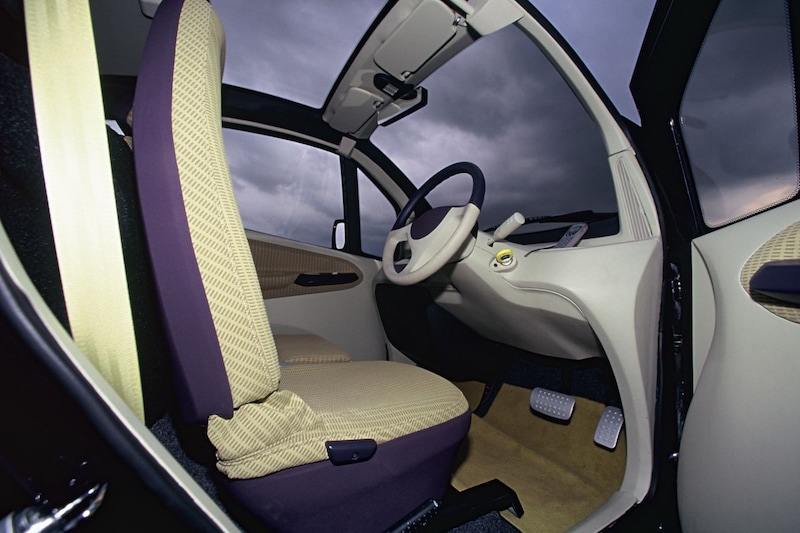
Nissan Hypermini
Admittedly, given the Hypermini’s purpose – a car for urban areas – it didn’t require a large battery either. The lithium-ion battery that Nissan used for the Hypermini was special, because many EVs from the 90s used batteries that consisted of, for example, sodium chloride and nickel. With the Lithium-ion battery, which is in the bottom of the Hypermini just like most modern EVs, you can get 115 kilometers on one battery charge, according to Nissan. An important caveat was that you had to turn off the air conditioning to get that range. You didn’t have to be without power for very long after the battery had run out: the battery could be fully recharged in four hours with a special 200V induction charger.
The performance of the Hypermini was befitting a real city car. The electric motor, which drives the rear wheels, produces 32 hp and 130 Nm of torque. The sprint time to 100 km/h is not known, but that was also the top speed of the Hypermini. The small electric Nissan was therefore not designed for speed.
Limited edition
Before the year 2000, the Nissan Hypermini was quite innovative. The idea of an affordable electric car is something that is in great demand in today’s car market. However, that was not the case 22 years ago. Ultimately, Nissan built about 300 copies of the Hypermini. Many of those cars served as pilot projects for electric cars and carsharing in Japanese cities. This car sharing was made possible because the Hypermini could be opened and locked with multiple key cards. The Hypermini was not reserved for Japan, by the way, because the University of California received 15 cars and the municipality of the city of Pasadena also put the Hypermini into use.
Eventually, Nissan bought these cars back over time. The brand pulled the plug on the Hypermini project and no longer felt like maintaining the cars. Reportedly, private copies still appear for sale in Japan, but most of the Hyperminis appear to have been destroyed.
10 years later
Nissan left the EV behind for a long time after the Hypermini, and finally picked up the gauntlet again in 2010 with the Leaf. With that car, Nissan was again early when it comes to EVs, but somehow it is a shame that the Japanese have not put any more energy into the electric car after the Hypermini. Who knows what affordable electric cars could have been on the market now…
.
– Thanks for information from Autoweek.nl


